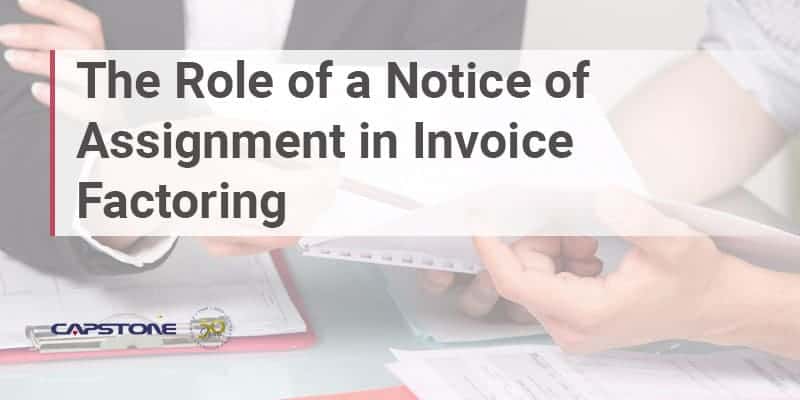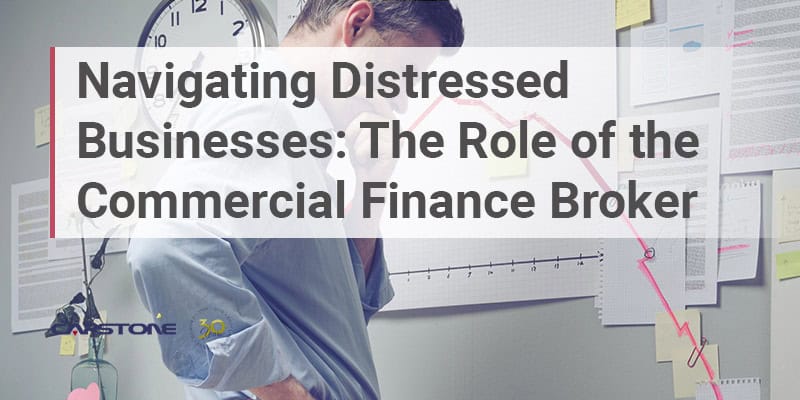When using invoice factoring, you sell and assign the rights, title, and interest in your accounts receivable to a factoring company. The rights you assign include the right to receive payment for the accounts receivable. A Notice of Assignment is a document that is used to notify your customers that you have sold accounts receivable to a factor.
What is Included in a Notice of Assignment?
A Notice of Assignment (“NOA”) is a letter sent by the factoring company (“factor”) to your customers (aka “account debtors”) notifying them that the ownership of your accounts receivable, or invoices, has changed hands to the factor, and payments should be made in accordance with the instructions provided.
The Uniform Commercial Code (UCC) provides guidance on certain information that must be included in the NOA in order to make it effective. The notice must:
- Advise your customer, the account debtor, that the amount/ invoice due has been assigned to the factoring company
- Advise that payment is to be made to the factoring company and not any other party
- Include remittance details so your customer is informed how payment should be made
- Be signed by the factoring company or the client
In some cases, the NOA may include language that deems continued use of your services to be consent to the terms of the NOA. The factor can, however, require your customers to sign and return a copy of the NOA to acknowledge receipt. Enforceability of a NOA is reliant on proof of receipt by the account debtor therefore, it is important to send the notice in a manner that provides proof of receipt by the account debtor.
The factor may revoke an NOA by sending a signed and notarized release notification to your customers. They will revoke an NOA if you decide not to factor an account any longer or if the factoring relationship has been terminated. An NOA can only be revoked if the account has no outstanding invoice balances.
The Importance of Sending a NOA to Your Customers
The NOA informs the parties to a factoring transaction of their responsibilities and provides the remittance details needed to make payments, so your factoring relationship flows smoothly without interruption. It also protects the factor in case you, the client, receive the payment instead of the factoring company.
From a legal perspective, a NOA explains to your customers that any payments made to you instead of the factor will not satisfy their obligation to pay outstanding invoices. Your customers may be held liable for payments made to you if they ignore the NOA or do not update accounts payable information.
If your customers continue to pay you for factored invoices, and you deposit those payments into your bank account, it is important to note that you may be responsible for penalties and additional fees for the extra time it takes for the factor to receive payment. Your factoring agreement may also include a misdirected payment fee you will have to pay if you fail to send the misdirected payments to the factor.
The best way to avoid any penalties or additional fees is to monitor customer compliance with the terms of the NOA, and take steps immediately to correct any situations where customers are misdirecting payments to your company instead of the factoring company.
Handling of Payments for Non-Factored Invoices
When you factor your accounts receivable, you agree to direct all payments for all current and future invoices to the factor, including payments for invoices you did not factor. This avoids the confusion that would otherwise occur, ensures the factoring company receives every payment, and streamlines the payment process. It prevents your customer from needing to maintain two vendors in their accounting system with differing payment instructions and reduces the likelihood of misdirected payments.
Your factoring agreement will include a procedure for handling payments for non-factored invoices. This may include sending you the total amount in a reserve release or applying the payments to open invoices and sending you the difference. Typically, when a factor receives payment for a non-factored invoice, the proceeds will be forwarded to you once the funds clear their bank account. Make sure you understand the procedure so that you comply with the NOA and avoid possible confusion affecting your relationship with your customer and the factor.
Explaining Your Decision to Factor to Your Customers
Before you begin a factoring relationship and your customers receive a NOA, it is always a good idea to explain to your customers why you have decided to factor their invoices.
Your customer should understand that your decision to factor is a positive step intended to improve your finances. Factoring is not a loan. Factoring provides access to working capital and cash flow so you can purchase materials/supplies, improve staffing and facilities to meet or exceed customer requirements and take on new or larger projects.
Invoice factoring allows you to continue offering the same payment terms your customers currently enjoy. Furthermore, you may be able to offer better payment terms based on the factoring facility.
It’s important to let customers know that outside of invoicing, their relationship will not change. You will still be providing the highest level of quality products and services. Customers want to be assured their business will not be impacted by your decision. The more you can do to assure customers that most things will not change, the more likely they will be comfortable
—–
The NOA is an important document that facilitates invoice factoring. It explains how payments are to be handled so that transactions flow smoothly between your company, customers and the factoring company.
Capstone is a leading commercial finance company that provides a range of financial products designed to meet the cash flow and working capital needs of nearly any type of business, including trade financing, invoice factoring, and PO financing. Contact Capstone at (212) 755-3636 to learn how invoice factoring can accelerate the conversion of your accounts receivable into immediate cash.




